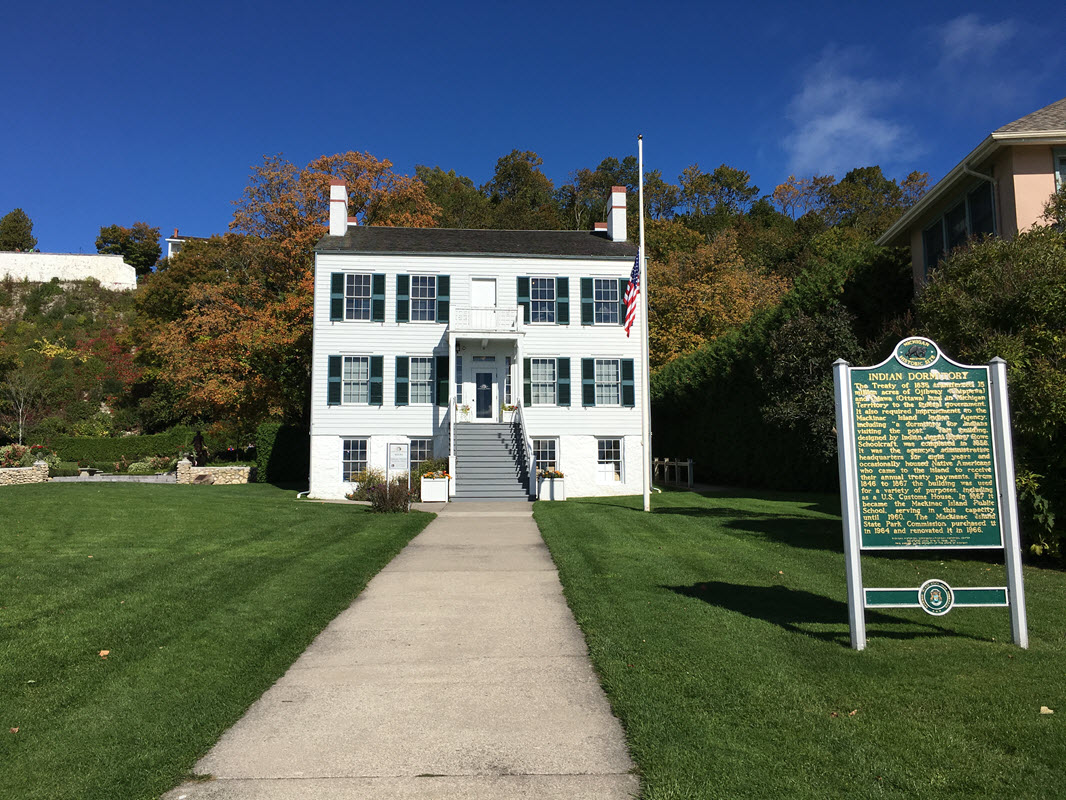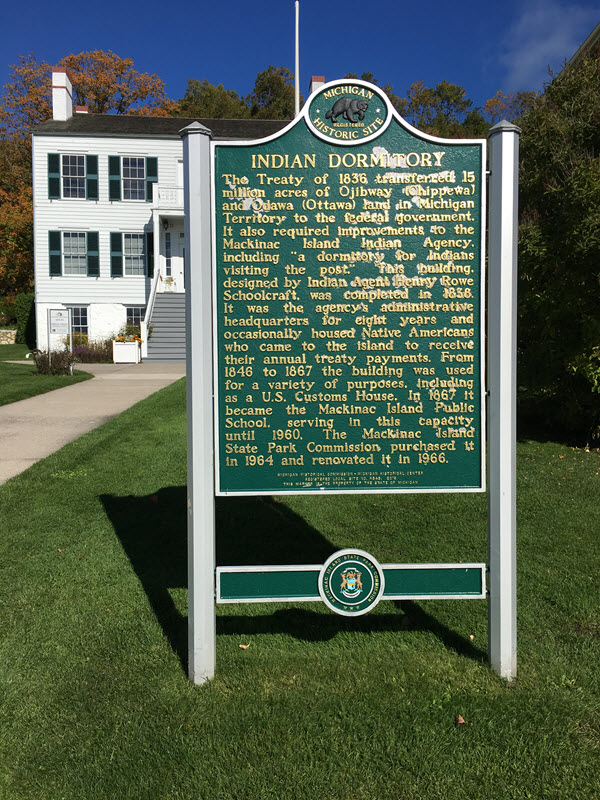Indian Dormitory / Henry R. Schoolcraft
The Treaty of 1836 transferred 15 million acres of Ojibway (Chippewa) and Odawa (Ottawa) land in Michigan Territory to the federal government. It also required improvements to the Mackinac Island Indian Agency, including “a dormitory for Indians visiting the post.” This building, designed by Indian Agent Henry Rowe Schoolcraft, was completed in 1838. It was the agency’s administrative headquarters for eight years and occasionally housed Native Americans who came to the island to receive their annual treaty payments. From 1846 to 1867 the building was used for a variety of purposes, including as a U.S. Customs House. In 1867 it became the Mackinac Island Public School, serving in this capacity until 1960. The Mackinac Island State Park Commission purchased it in 1964 and renovated it in 1966.Given the choice, Indian Agent Henry Schoolcraft (1793-1864) moved from the “wild magnificence of nature” at Sault Ste. Marie “back one step into the area of the noisy world” on Mackinac Island in 1833. From the Agency House next door to this site, he continued his life’s work documenting “the history, manners and customs, languages and general ethnology” of Michigan Indians. He first came to Michigan in 1820 as the geologist with the Lewis Cass expedition. In 1822 he became the Indian agent at the Sault. Named commissioner for treating with the Indians in 1836, he insisted on broad tribal involvement in the negotiations. After Schoolcraft left Mackinac for his native New York in 1841, he continued to write and publish research on Michigan Indians that scholars still use today.

Plaque via Michigan History Center